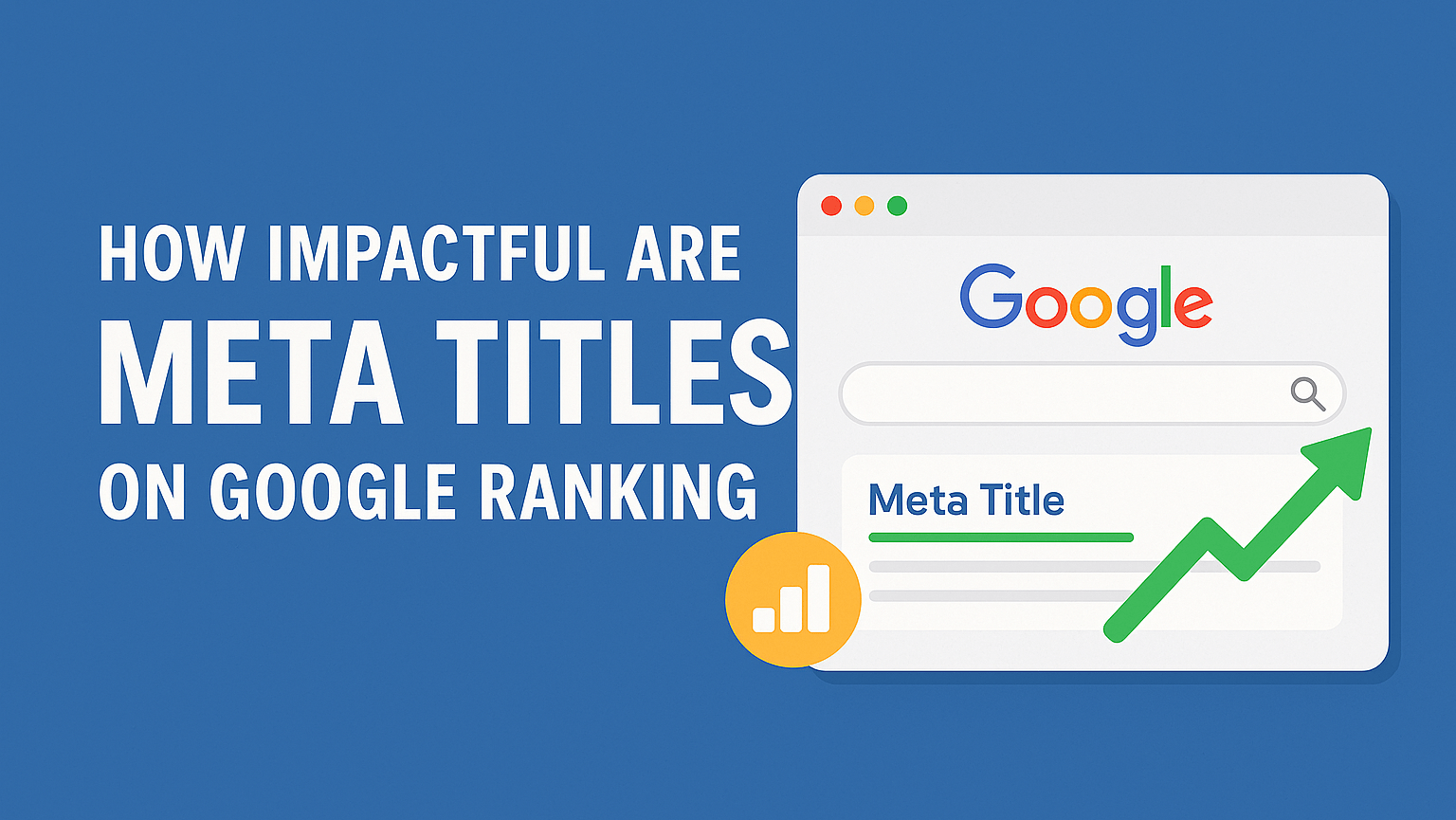
How Impactful Are Meta Titles on Google Rankings?
How Impactful Are Meta Titles on Google Rankings?
The power of a few words can change the course of a user’s search experience. Meta titles, those short bursts of text you see above each search result, guide millions of decisions every day. While they might seem like a minor detail in website management, the significance of these titles is much greater than most would expect.
When crafting a web page, it’s common for content strategists and SEO professionals to pore over headings, images, and body copy—but the meta title sits quietly at the core of a successful search strategy. Google’s algorithms are clever, but they rely heavily on the signposts we create, and the meta title is one of the brightest.
What are Meta Titles?
Meta titles, or title tags, are HTML elements that specify the title of a web page. They appear on search engine results pages (SERPs) as clickable headlines and are pivotal in forming a searcher’s first impression. Beyond just informing a click, these titles signal to Google what a page is about.
A well-crafted meta title typically captures the essence of the page content in around 50–60 characters. It’s easily found in the code:
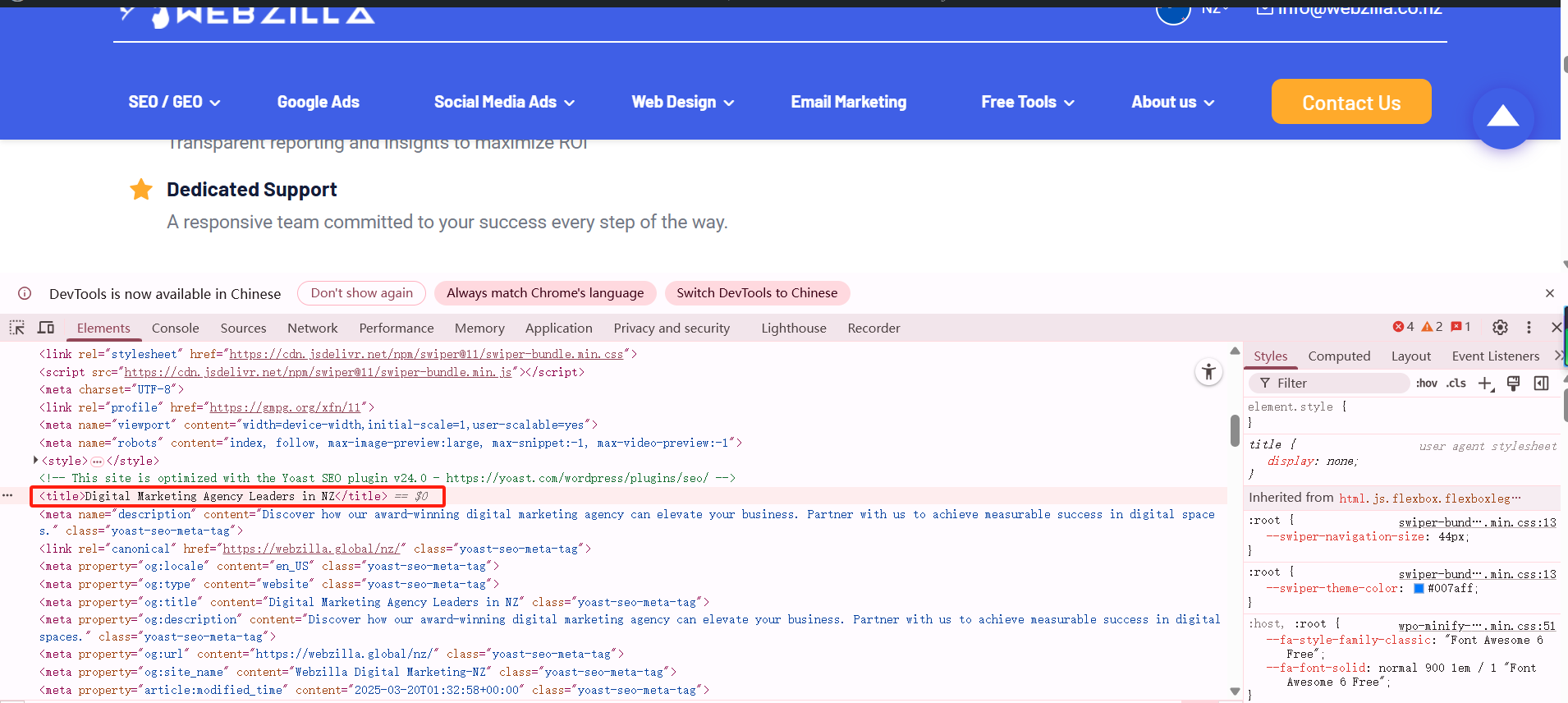
What are Meta Descriptions?
Meta descriptions are concise summaries that appear beneath your page title in search engine results. While Google has stated that meta descriptions are not a direct ranking factor, their influence on user behaviour is undeniable. A well-crafted meta description can significantly improve your click-through rates (CTR) by enticing users to visit your site over competitors.
Meta Titles vs. Meta Descriptions: What’s More Impactful?
Meta titles are a direct ranking factor and play a crucial role in how search engines understand and rank your content. Meta descriptions, on the other hand, serve as your page’s “advertisement” in the search results. While they don’t directly affect rankings, they can be the deciding factor in whether a user clicks on your link or scrolls past. In essence, meta titles help you rank, but meta descriptions help you get the click.
Best Practices for Writing Effective Meta Descriptions
- Keep it concise: Aim for 150–160 characters to ensure your description displays properly on all devices.
- Incorporate target keywords: Use relevant keywords naturally to signal relevance to both users and search engines.
- Match user intent: Write descriptions that address what your target audience is searching for and what they can expect from your page.
- Include a call to action: Encourage users to take the next step, such as “Learn more,” “Get started,” or “Discover how.”
- Make it unique: Each page should have a distinct meta description that accurately reflects its content.
By following these best practices, you can create meta descriptions that not only attract more clicks but also set clear expectations for users, enhancing both user experience and your site’s overall performance.
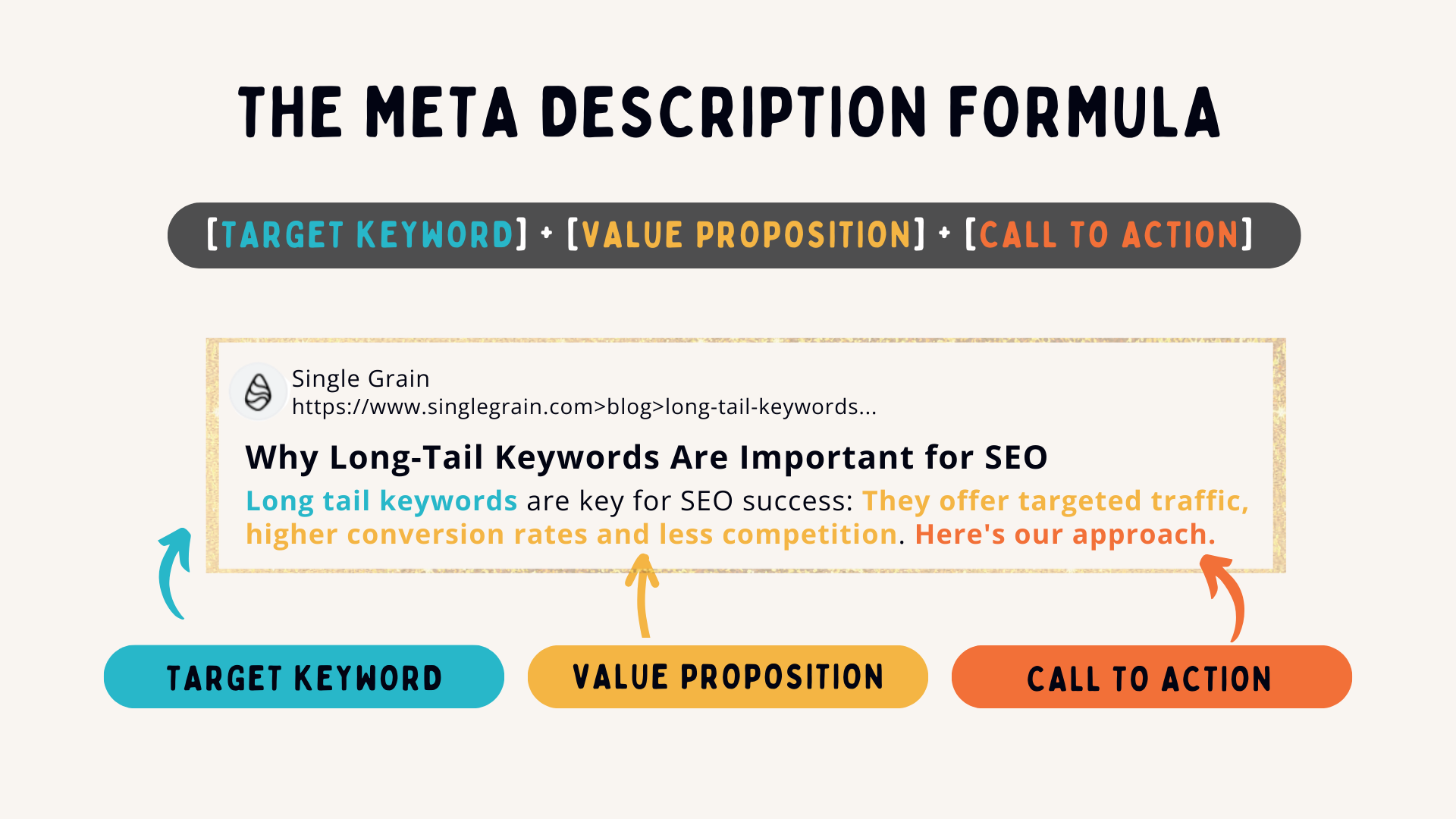
Image Source: Single Grain
Aligning Meta Titles and Descriptions with User Intent
Understanding and addressing user intent is fundamental to effective SEO. User intent refers to the underlying goal or purpose behind a search query—whether someone is looking to buy, learn, compare, or find a specific website. When your meta titles and descriptions are closely aligned with what users are actually seeking, you not only improve your chances of ranking higher but also increase the likelihood that users will click through to your site.
Why User Intent Matters for Rankings and Click-Through Rates
Search engines like Google are increasingly sophisticated at interpreting user intent. Pages that clearly match the intent behind a search query are rewarded with better rankings. If your meta titles and descriptions accurately reflect the content and purpose of your page, users are more likely to find your listing relevant and trustworthy, leading to higher click-through rates (CTR).
Practical Tips for Addressing User Intent in Meta data
- Research search queries: Use keyword research tools to understand the types of questions and phrases your audience uses.
- Analyse the SERPs: Look at the top-ranking pages for your target keywords to identify what kind of content Google is favouring—informational, transactional, navigational, or commercial.
- Be specific and relevant: Craft meta titles and descriptions that directly answer the user’s query or promise the solution they’re seeking.
- Use natural language: Write in a way that mirrors how your audience speaks and searches.
- Set clear expectations: Ensure your metadata accurately represents the content on your page to build trust and reduce bounce rates.
By prioritising user intent in your meta titles and descriptions, you create a stronger connection with your audience and signal to search engines that your content is the best match for their needs. This approach not only boosts your visibility but also drives more qualified traffic to your site.
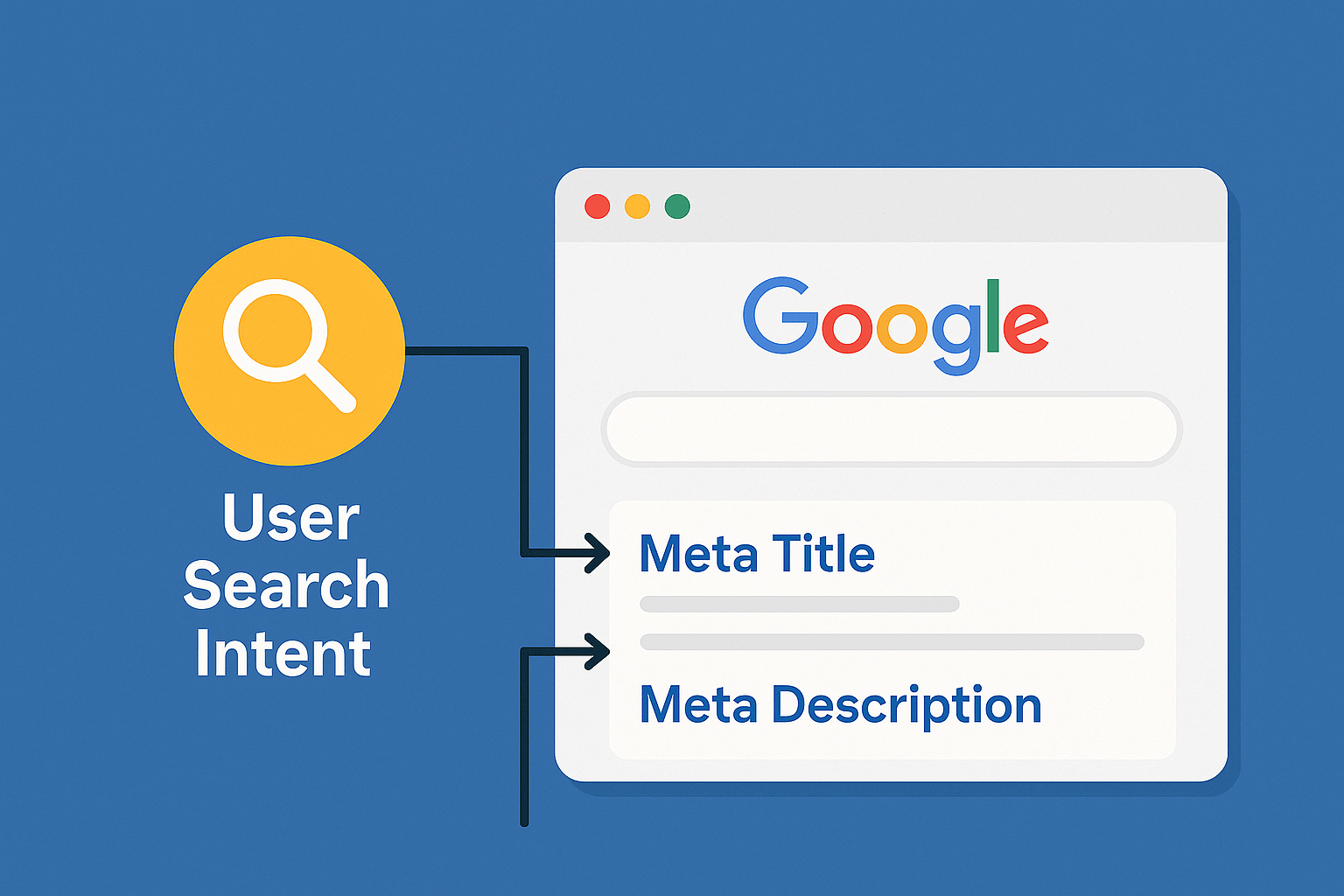
The Influence on Click-Through Rates
When users scan through Google’s search results, they’re presented with a handful of links. Each title competes for attention. Will they click yours or the next one? That split-second choice can mean the difference between a successful visit and being ignored entirely.
Here’s where the impact becomes clear: Google’s organic results are shaped by relevance and engagement. Meta titles that clearly address the searcher’s intent tend to attract more clicks. And higher click-through rates can indicate to Google that your page is valuable, potentially boosting its ranking over time.
Consider this
- Clear and concise titles: Easily communicate your page’s purpose.
- Keyword inclusion: Align your title with what your audience is searching for.
- Compelling language: Piques curiosity or offers a solution.
The result is a feedback loop. Good titles get more clicks, which tells Google your content matches expectations, nudging your page higher in the results.
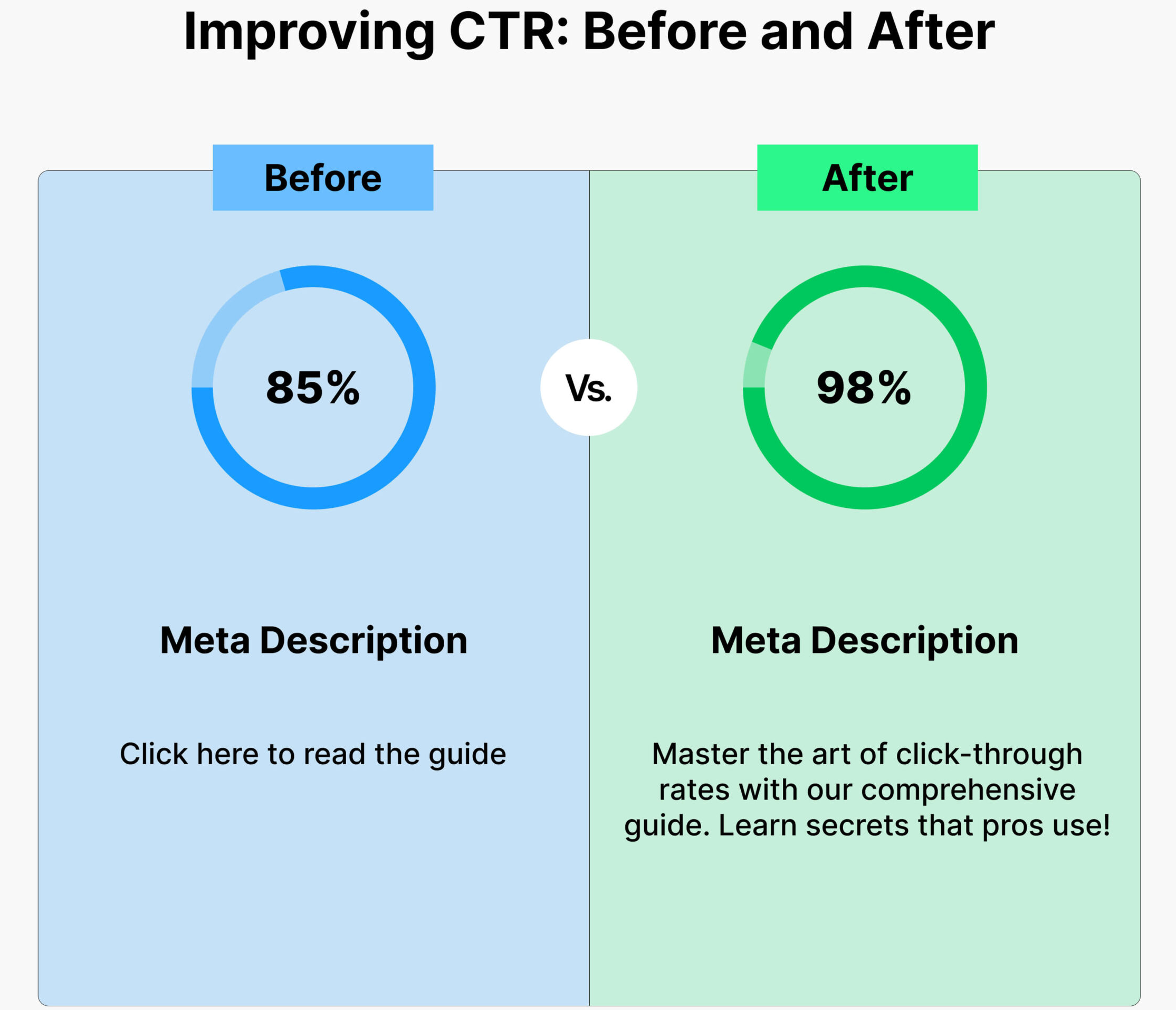
Google’s Take: Official Guidance and Reality
Google has stated that they may use your meta title or replace it with something else—especially if the provided title doesn’t match the on-page content. But, in most cases, a well-written title aligns with Google’s priorities and is displayed as intended.
Here’s a quick comparison between an ideal and a subpar meta title:
| Title Example | Likely User Response | Google’s Preference |
|---|---|---|
| “Buy Running Shoes Online – Free NZ Delivery” | High engagement, relevance | Aligned to query intent |
| “Home” | Low engagement, too vague | May be replaced or ignored |
| “Welcome to Our Site” | Little context, not enticing | Often changed in SERPs |
Where Meta Titles and Descriptions Fit Among Google’s Ranking Factors
Google uses hundreds of ranking factors to determine which pages appear at the top of search results. While the exact algorithm is proprietary and constantly evolving, several key factors have been consistently identified by industry experts and confirmed by Google representatives.
Key Google Ranking Factors
- Content Quality, Relevance, and E-E-A-T: Google prioritises pages that provide comprehensive, accurate, and valuable information that matches the user’s search intent, with a strong emphasis on Experience, Expertise, Authoritativeness, and Trustworthiness (E-E-A-T).
- Backlinks: The number and quality of external sites linking to your page remain a strong indicator of authority and trustworthiness. if you wants to know more about how to build backlink feel free read our this article : how to create backlinks
- Page Experience: Factors such as mobile-friendliness, page speed, and secure connections (HTTPS) contribute to higher rankings.
- User Engagement Signals: Metrics like click-through rate (CTR), dwell time, and bounce rate can indicate how useful users find your content.
- On-Page Optimisation: Proper use of keywords in headings, body text, and metadata helps search engines understand your content.
The Role of Meta Titles and Descriptions
Meta Titles: Meta titles are a direct ranking factor. They help search engines determine the topic and relevance of your page. Well-optimised titles that include target keywords can improve your visibility in search results.
Meta Descriptions: While meta descriptions are not a direct ranking factor, they play a crucial role in influencing CTR. A compelling meta description can encourage more users to click on your listing, which can indirectly impact your rankings through improved engagement metrics.
Staying Current with Google’s Algorithm
Google regularly updates its search algorithms to improve the quality of results. Recent updates have placed even greater emphasis on user experience, content quality, and intent matching. For the latest guidance, refer to Google Search Central and reputable SEO resources such as Moz and Search Engine Journal.
By understanding where meta titles and descriptions fit within the broader landscape of ranking factors, you can craft metadata that not only supports your SEO goals but also aligns with Google’s evolving standards.
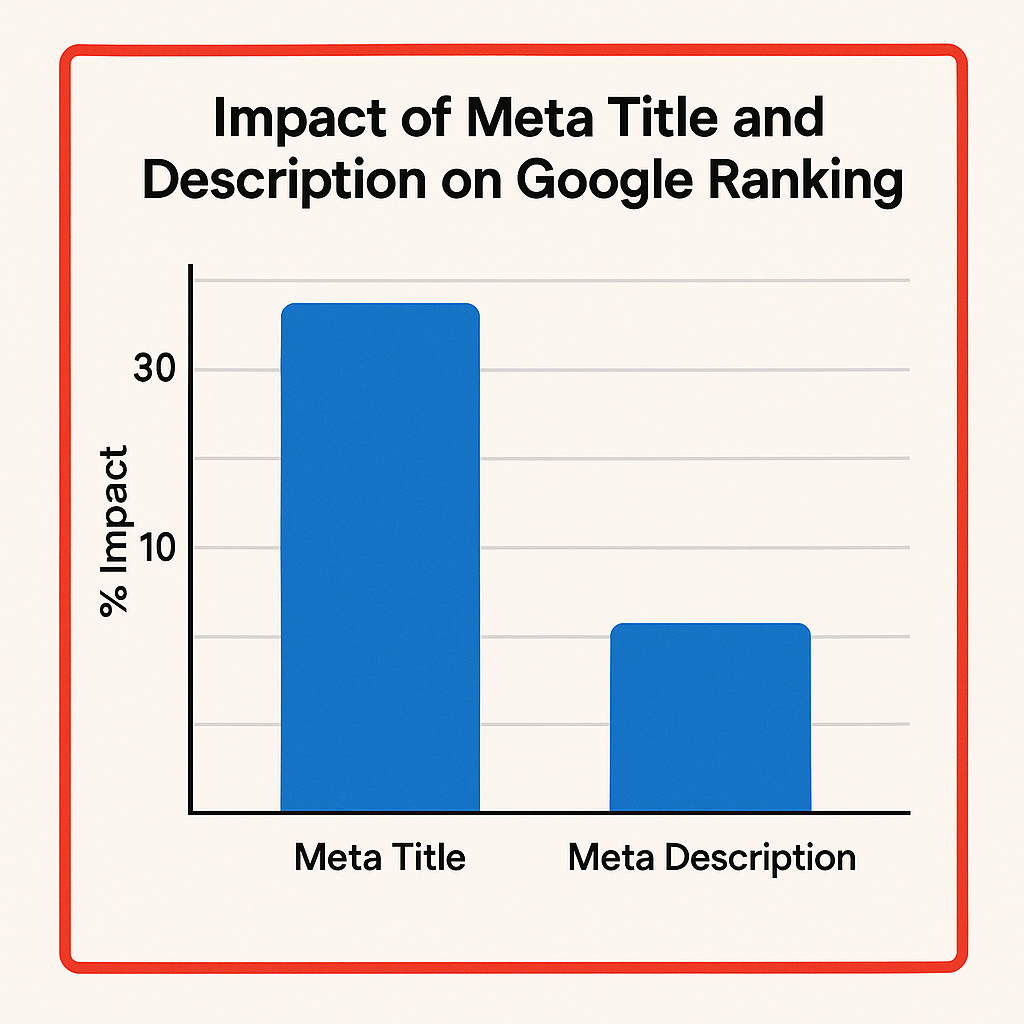
Snippets
Snippets are the brief previews of your web pages that appear in Google’s search results. They typically include your meta title, meta description, and sometimes additional information such as ratings, images, or site links. These snippets are your first—and often only—opportunity to capture a searcher’s attention and entice them to click through to your site.
Featured Snippets and Rich Snippets
Beyond standard snippets, Google sometimes displays featured snippets—highlighted boxes at the top of the search results that directly answer a user’s query. These are often pulled from well-structured content that clearly addresses common questions. Rich snippets, on the other hand, include enhanced information such as star ratings, event details, or product availability, made possible by implementing structured data (schema markup) on your site.
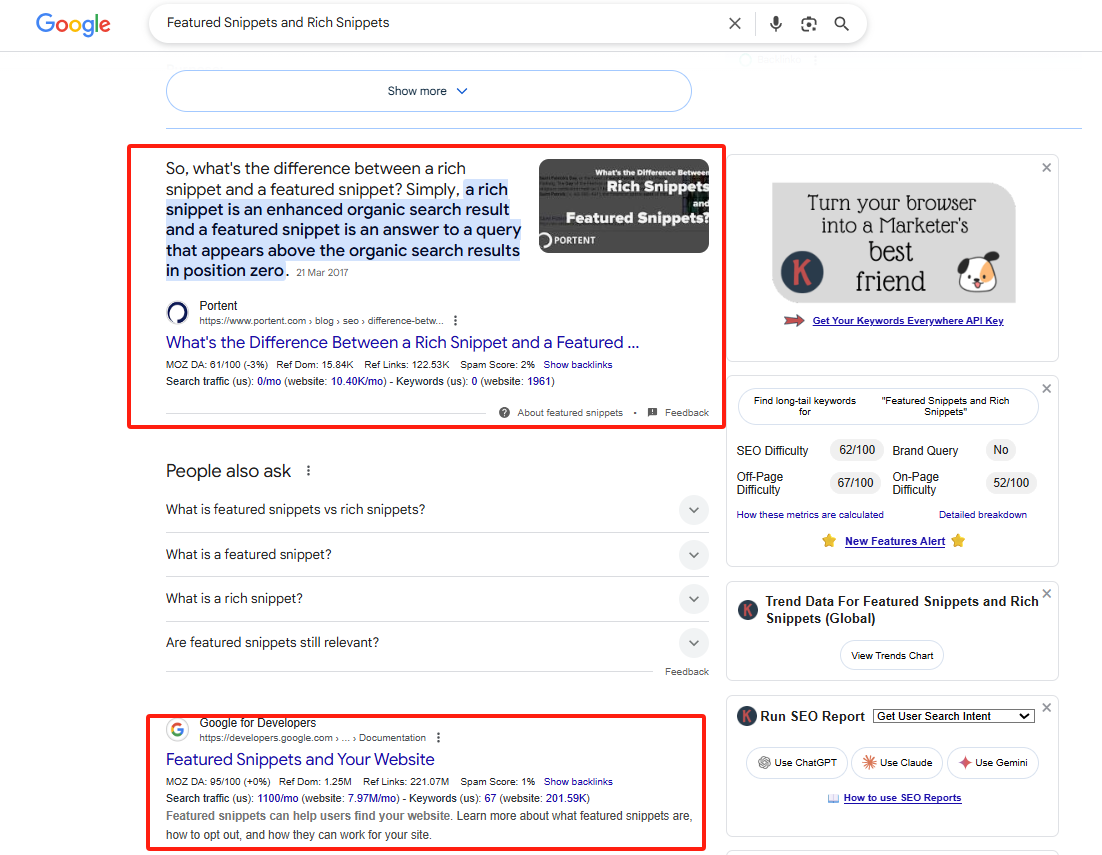
Optimising for Snippets
- Craft clear and concise meta titles and descriptions that accurately summarise your content.
- Answer common questions and structure your content with headings and bullet points to increase the chances of being selected for a featured snippet.
- Implement schema markup to enable rich snippets and provide additional context to search engines.
By focusing on snippet optimisation, you can improve your visibility in search results, attract more qualified traffic, and establish your site as a trusted resource in your industry.
Psychological Impact on Searchers
It’s not just about algorithms. Meta titles interact with real people making real choices.
Imagine you’re looking for advice on home insulation. You see two results:
- “Home Advice”
- “How to Insulate Your Home Efficiently in NZ”
The first is vague. The second is direct, keyword-rich, and promises actionable information. It’s no surprise that the second result would attract more clicks, building trust before a single word of content is read.
People are hard-wired to look for relevance and clarity. Well-written meta titles reduce the mental effort required to choose and reassure users they’re in the right place.
Common Pitfalls to Avoid
Creating effective meta titles seems simple, but there are missteps that can sabotage your efforts:
- Keyword stuffing: Overloading titles with keywords can turn away users and may result in Google rewriting your title.
- Multiple pages with identical titles: This confuses both crawlers and users, diluting authority.
- Being too generic: “Home”, “Products”, and “Welcome” say nothing unique about your content.
- Overusing branding: Only include your brand name when it adds value or you’re targeting branded queries.
Steering clear of these traps helps signal both relevance and professionalism.
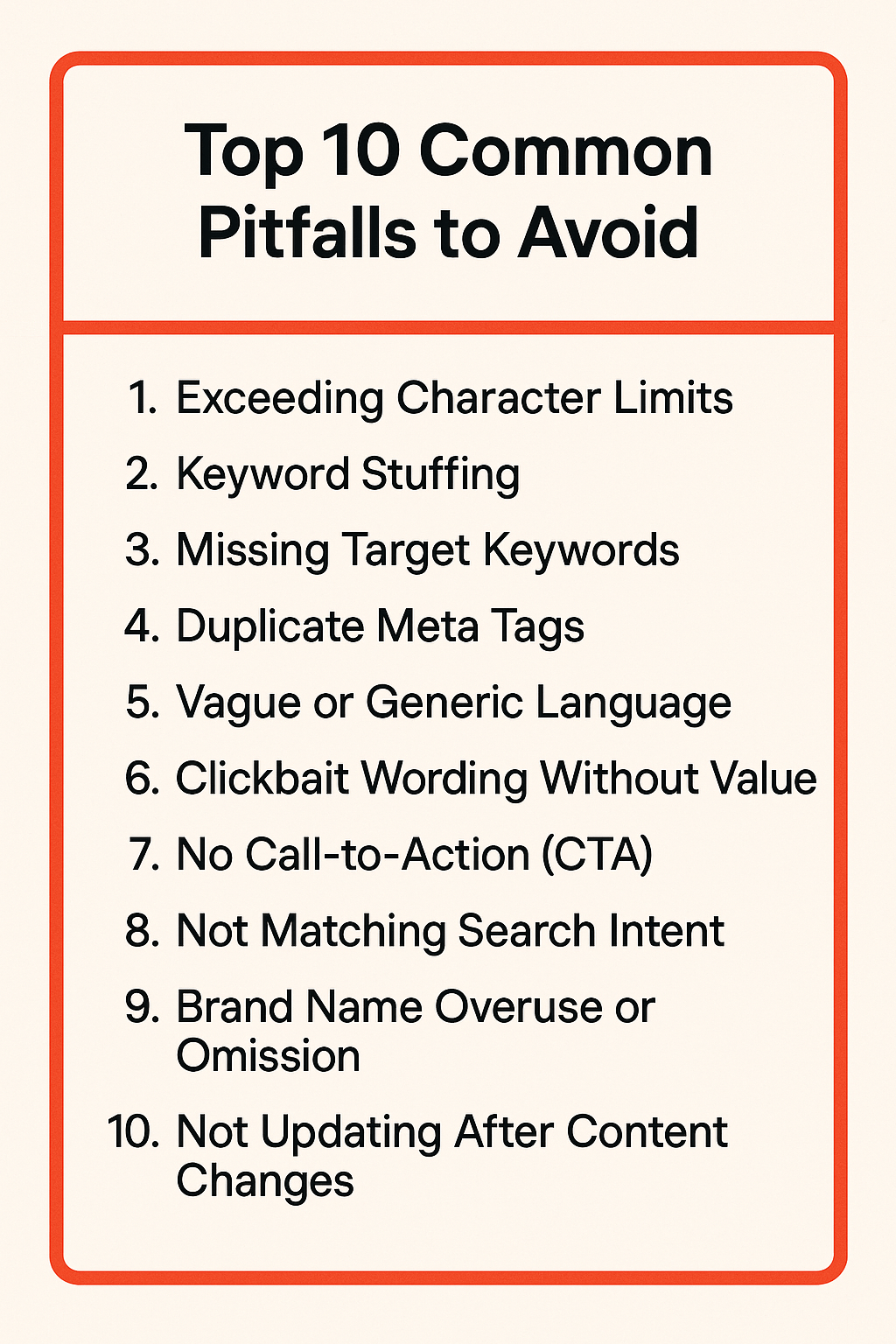
Practical Tips for Better Meta Titles
Drawing on both industry best practices and real-world results, these suggestions can lead to more effective meta titles:
- Stay within 50–60 characters to avoid truncation on most devices.
- Place primary keywords towards the beginning where possible.
- Include unique, descriptive phrases for each page.
- Use action words to drive engagement (e.g., “Learn”, “Buy”, “Find”).
- Avoid using ALL CAPS — it can appear spammy.
Here’s a summary checklist:
- Character count: 50–60
- Primary keyword near start
- Clear description of page content
- Unique title for each page
- Optional: Brand name at the end
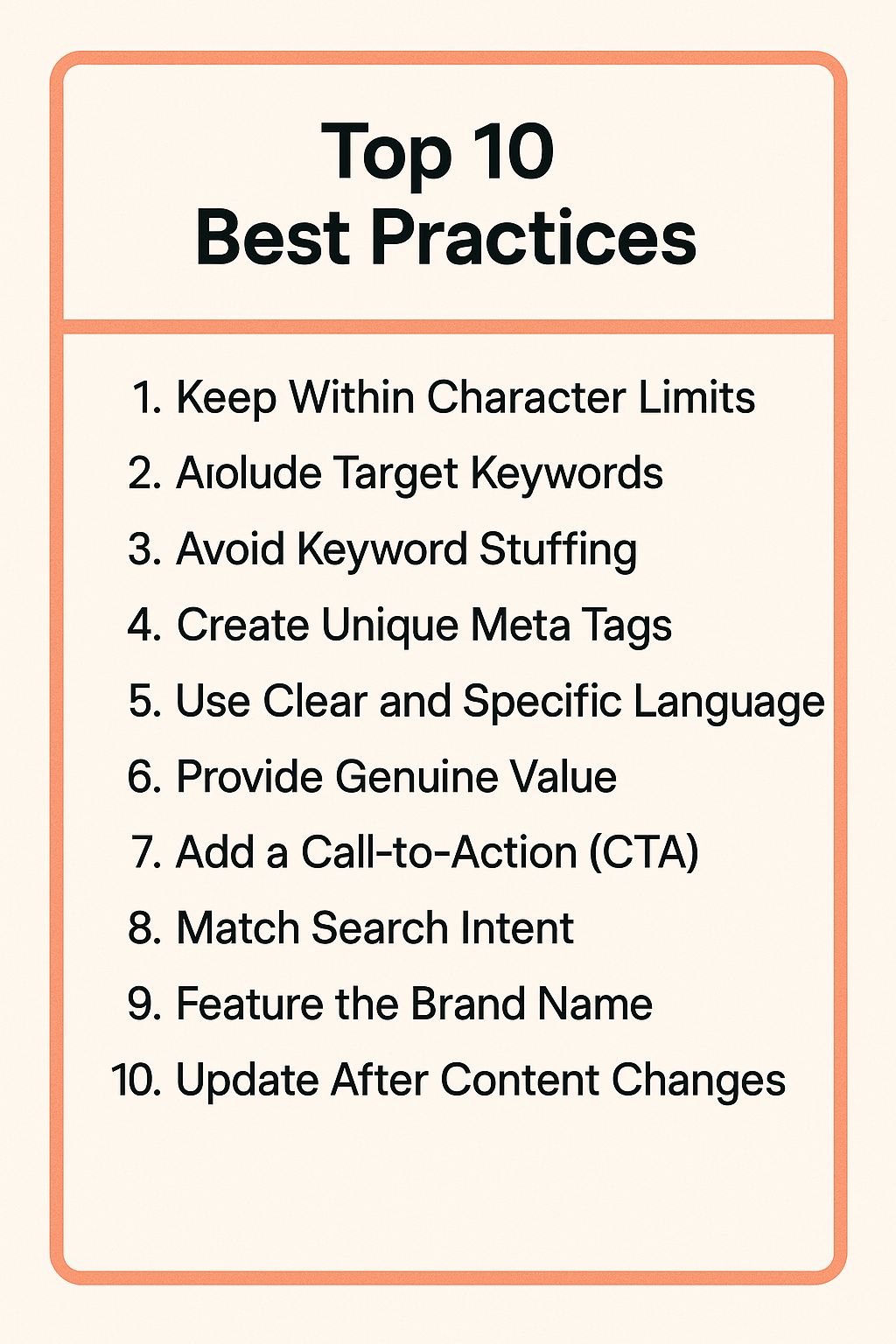
How Google Handles Rewrites
There’s always some unpredictability in what Google displays. The search engine sometimes changes your meta title to better fit the user’s query or to correct vague or misleading titles. These changes are designed for clarity, but they’re also a warning: write your meta titles for readers, not just for search engines.
Recent studies have tracked how often Google modifies titles. The result? About 60% of page titles display unchanged on result pages, meaning 40% get some form of rewrite. Pages with poorly written or irrelevant meta titles are at highest risk.
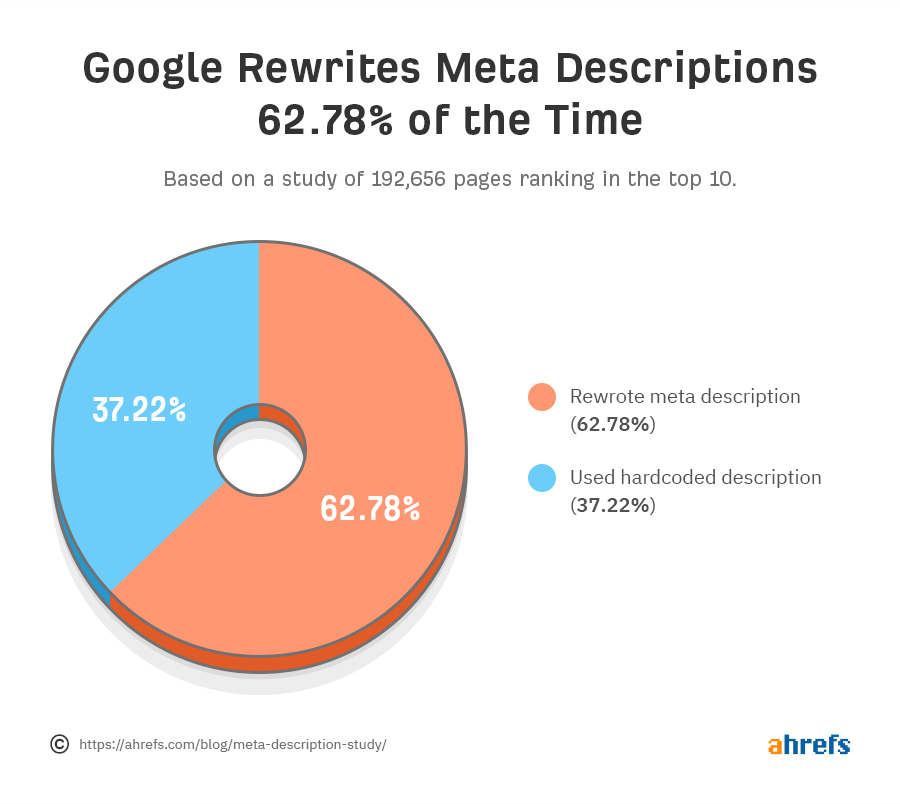
Image Source: Ahrefs
Meta Titles and Mobile Search
Mobile devices now account for most web searches. Google often shortens titles even further in mobile results to suit smaller screens. With less visible space, the precision of each word matters even more.
A detailed analysis:
| Device Type | Visible Meta Title Characters | Considerations |
|---|---|---|
| Desktop/Laptop | ~60 | Slightly more room for branding |
| Mobile | ~40–50 | Conciseness and impact are paramount |
Crafting meta titles that get to the point quickly helps maximise visibility for mobile users.
Strategic Iteration: The Secret Weapon
The best-performing meta titles are rarely accidental. Regularly reviewing analytics, tweaking underperforming titles, and A/B testing new variations can make a striking difference to traffic.
Tips for ongoing improvement:
- Monitor click-through rate (CTR) in Google Search Console.
- Watch for drops in CTR after making title changes.
- Experiment with different action verbs or unique selling points (USPs).
- Listen to customer language in reviews and queries for inspiration.
The willingness to adapt, rather than set and forget, means each title has the best chance to drive engagement.
Crafting Meta Titles for Different Industries
Not every industry requires the same style of meta title. An e-commerce site may benefit most from titles focused on offers and delivery, while a local service provider should prioritise location and trust. Educational sites need to convey authority and specificity.
A few industry-tailored examples:
- Retail: “Shop Women’s Hiking Boots – Free Worldwide Shipping”
- Local Service: “London Electrician – Licensed & Reliable Repairs”
- Information/Education: “Beginner’s Birdwatching Guide – Identify Common Species”
Each title is crafted to precisely target its audience and clearly signal what they’ll find, meeting both SEO requirements and user expectations.
Meta Titles as Part of a Bigger Picture
No single element can guarantee top ranking on Google. Yet, meta titles remain a foundational tool—part of a greater strategy including relevant content, structured data, and high-quality backlinks.
Think of them as a handshake before a conversation: a briefly exchanged promise that what follows is worth the user’s attention. When written with both search engines and real people in mind, they steer users in the right direction and signal credibility at a glance.
They might look like a few simple words, but their impact is anything but modest.

